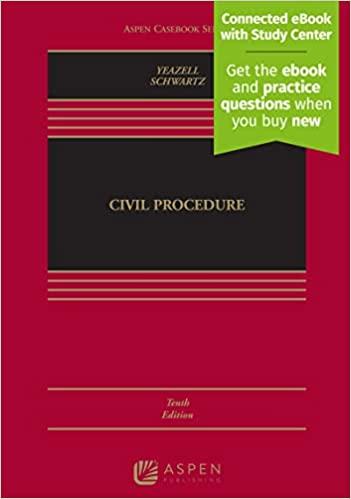Question
Three years later, Paul has returned to you with more questions and concerns. Now, the shareholders of the corporation consist of Paul, John, George, Roberto,
Three years later, Paul has returned to you with more questions and concerns. Now, the shareholders of the corporation consist of Paul, John, George, Roberto, Denise, and Chung. Paul, John, and George each own 1/4th of the corporation, and the remaining 1/4th of the corporation was equally divided among Roberto, Denise, and Chung. All six also sit on the board; Paul is the CEO, John is the COO, and George is the CMO. By this time, the corporation has turned a net profit of $3 million in the most recent fiscal year, and it is poised to double its profit in the upcoming year.
The corporation caught the eye of Surfs Up, Inc., a competitor, who approached George and offered $20 per share, valuing the corporation at $20 million. That same month, John's sister Andrea, a major shareholder in a large retail conglomerate, The Clothes Conglomerate, indicated that The Clothes Conglomerate would like to offer $25 per share, valuing the corporation at $25 million. Andrea texted to John that the Clothes Conglomerate did not trust in Paul's leadership, however, and that it would be "their little secret" that the Clothes Conglomerate would terminate Paul as CEO after the acquisition and replace him with John, to whom they would give a $1 million bonus if the transaction was successful.
Both George and John took their respective offers to the Board of Directors. The Board of Directors hired a local financial analyst to weigh the competing offers. In the meantime, Surfs Up, Inc. increased its offer to $30 per share, and The Clothes Conglomerate promptly matched the offer. The financial analyst studied the question for a week and recommended to the board to move forward with The Clothes Conglomerate, largely because they had more financial resources to grow the company. The financial analyst recommended that no additional offers be solicited, as both offers could go away soon. Denise and Chung expressed that they were "extremely uncomfortable" with not soliciting other offers, as they believed that the corporation could be worth as much as $50 per share.
During a contentious debate over which offer was better, John (who knew George preferred The Clothes Conglomerate already) pulled Roberto aside and indicated that if he voted in favor of The Clothes Conglomerate, he would allow Roberto to live in his large house in Malibu rent-free for a year. John also indicated that The Clothes Conglomerate would have more resources to make the corporation more successful and that it would be detrimental to the corporation to have a 50-50 tie in the shareholder vote.
When the shareholders held a vote, John, George, and Roberto (voting 58.3% of the shares) voted to approve of moving forward with the Clothes Conglomerate acquisition, while Paul, Denise, and Chung (voting 41.7% of the shares) voted in favor of moving forward with Surfs Up, Inc.
Paul, Denise, and Chung initiate a shareholder derivative lawsuit.
- What issues do you think existing with respect to fiduciary duties?
- What do you think the majority shareholders would argue, and what do you think the minority shareholders who initiated the derivate lawsuit would argue?
- Which party do you think will ultimately prevail?
- If the lawsuit is successful, what should the company now do?
Step by Step Solution
There are 3 Steps involved in it
Step: 1

Get Instant Access to Expert-Tailored Solutions
See step-by-step solutions with expert insights and AI powered tools for academic success
Step: 2

Step: 3

Ace Your Homework with AI
Get the answers you need in no time with our AI-driven, step-by-step assistance
Get Started


